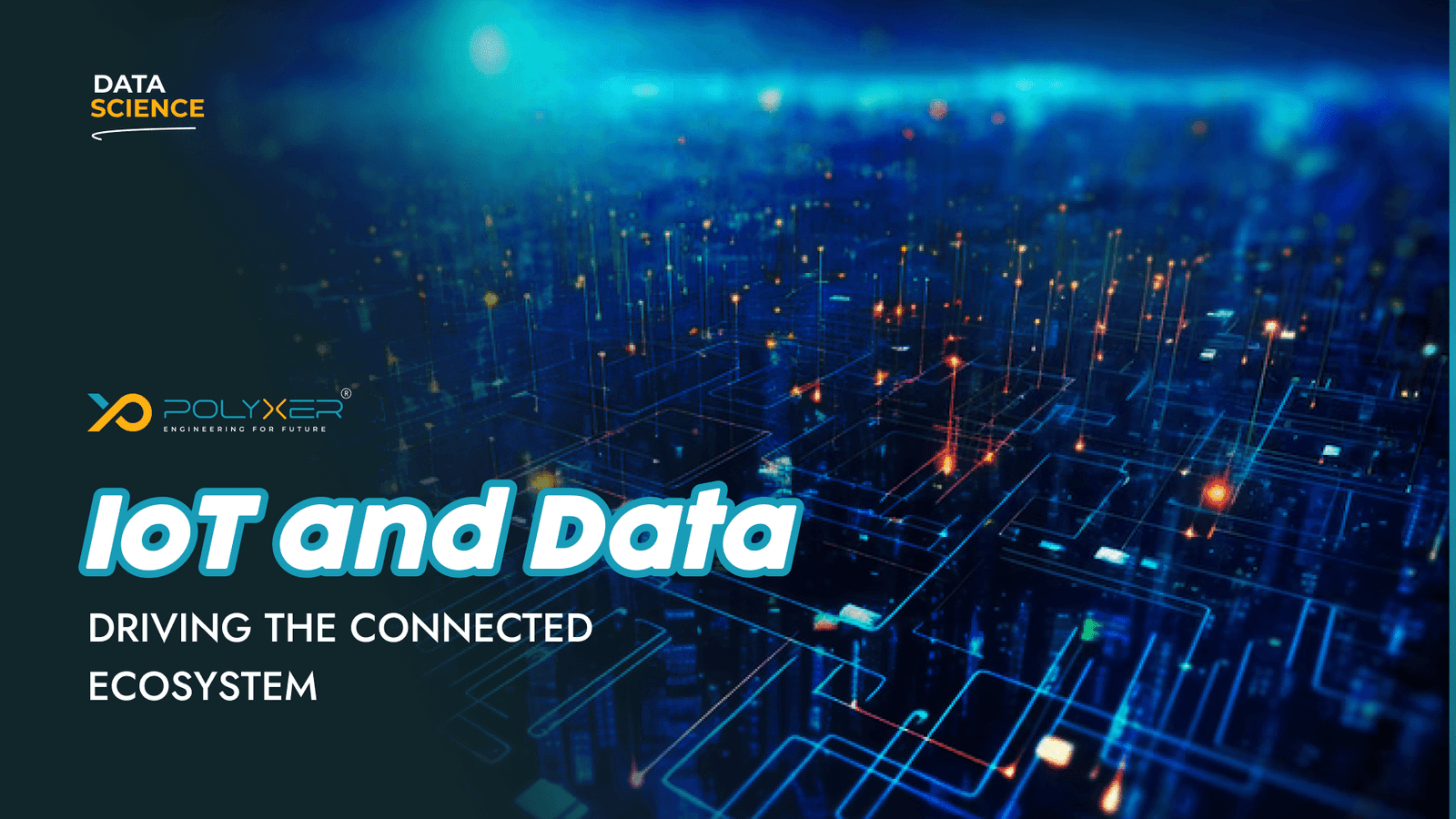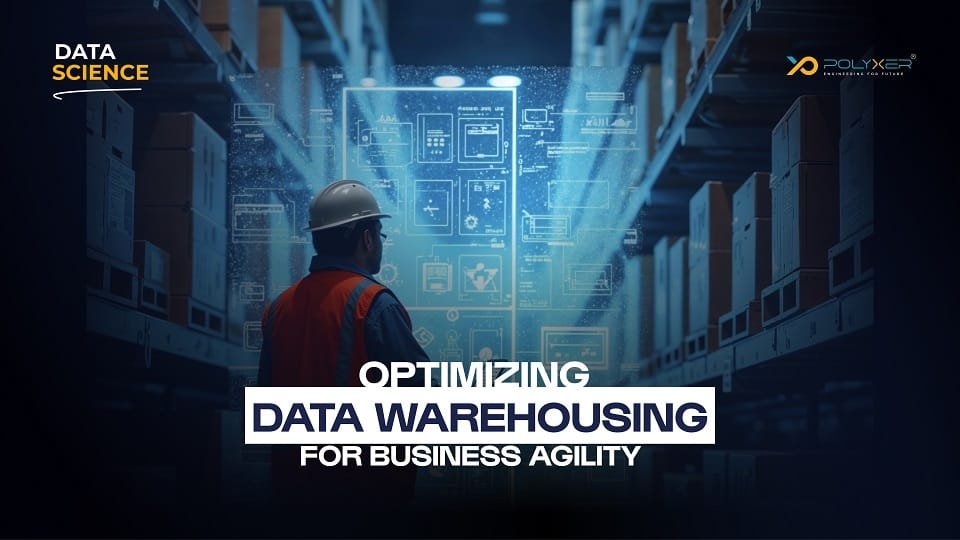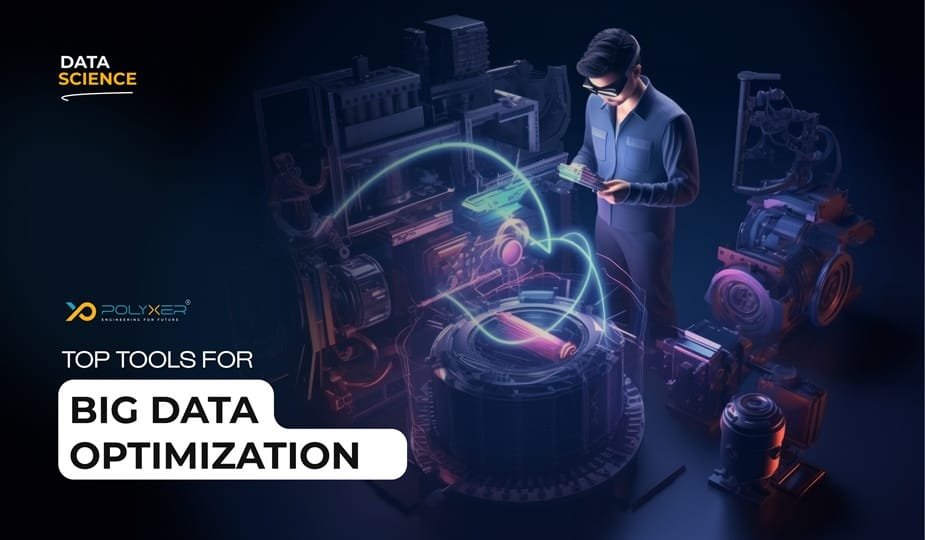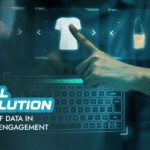
Retail Revolution: The Role of Data in Customer Engagement
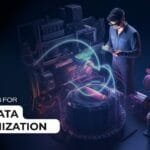
Top Tools for Big Data Optimization
The Internet of Things (IoT) has transformed businesses, cities and individuals to interact with the physical world. By embedding sensors and connectivity in everyday objects, IoT generates massive scale of data that provides real-time insight, automate processes, and make smart decisions. This outbreak of device-generated data is the major driver behind the connected ecosystem-a digital fabric where devices, systems and people seamlessly communicate and collaborate.
Further, in this newsletter, we will focus on how IoTs and data are strengthening the ecosystems together, bringing revolution in industries, enhancing the quality of life, and shaping the future of technology. We will explore IoT data characteristics, analytics challenges and solutions, real -world applications, technical enablers and evolving landscape for enterprises and consumers.
Understanding IoT and Its Data
What is IoT?
IoT refers to the network of physical items called as “things” embedded with sensors, software and other techniques to connect and exchange data with other devices and systems on the Internet or private networks. These "things" range from home appliances and industrial machinery to vehicles, wearables, and environmental sensors.
The Nature of IoT Data
IoT data is characterized by:
- Volume: Billions of devices produce a large amount of data ranging from measurements such as temperature, location, vibrations to multimedia currents.
- Velocity: Data is streamed in real time or near real time, demanding rapid ingestion and processing.
- Variety: IoT data span structured format such as sensor reading, semi-composed log and unstructured video or audio.
- Variability: Data can vary in quality and frequency of tools and environment.
- Veracity: It is important to ensure data accuracy between noisy or unreliable sensor outputs.
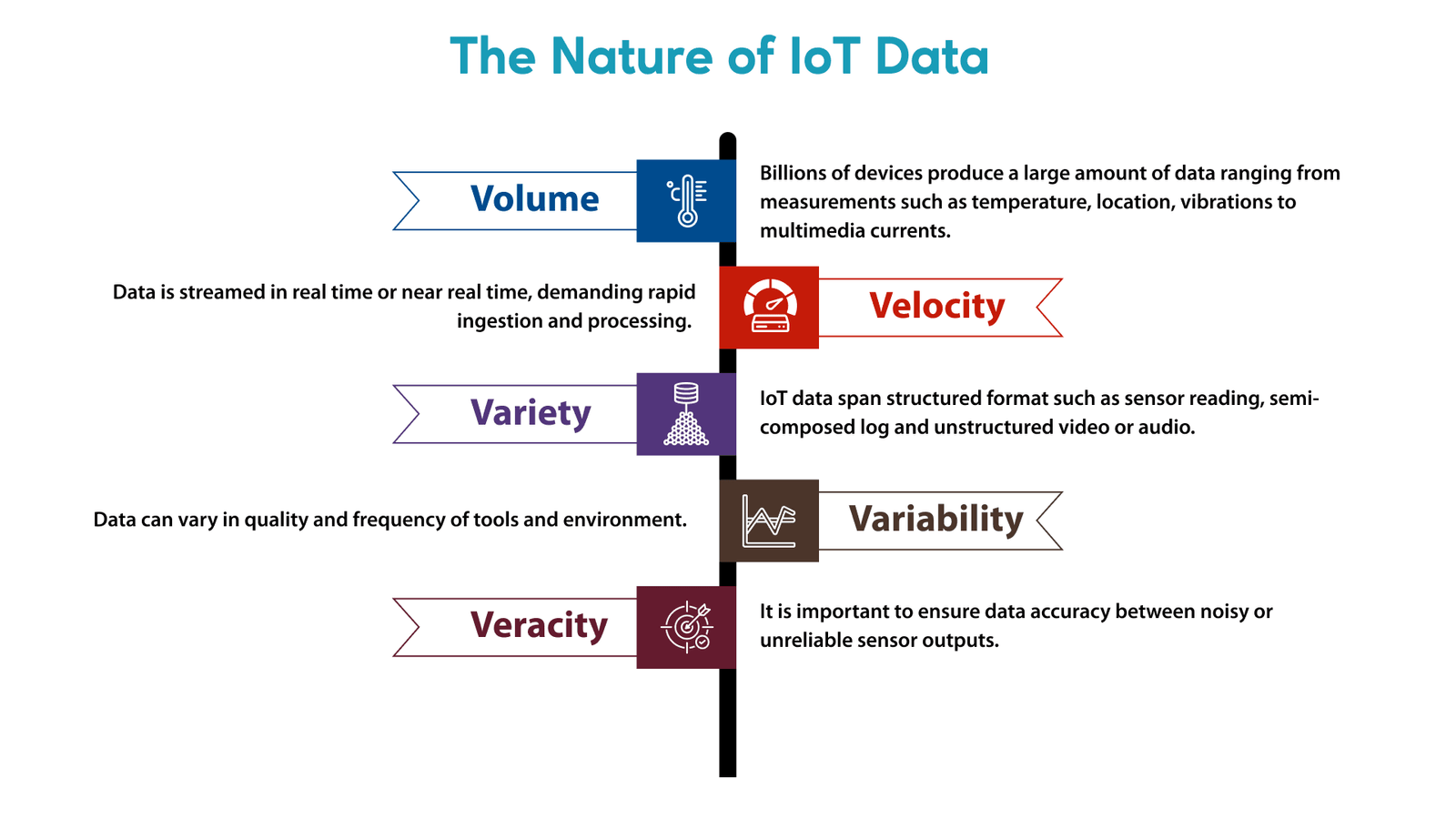
The Nature of IoT Data
Managing and obtaining value from this data demands specialized architecture and analytics abilities.
The Connected Ecosystem: A Digital Fabric
A connected ecosystem integrates IoT devices with data platforms, applications and users, creating an environment where information is seamlessly flowing and actions are automated smartly.
Components of the Connected Ecosystem
- Devices and Sensors: Edge devices collect data on environment, use, location or position.
- Connectivity: Networks such as Wi-Fi, LTE, 5G, Zigbee and LoRa transmit data for centralized and edge computing resources.
- Edge Computing: Local processing reduces delays and bandwidth by analyzing data close to its source.
- Cloud Platforms: Scalable data storage and advanced analytics capabilities reside in the cloud.
- Data Analytics and AI: Real-time streaming analytics, machine learning and AI algorithms extract actionable insights.
- Applications and Interfaces: Dashboard, alert, control system and user interfaces enable interaction with the ecosystem.
- Security and Governance: Protecting devices and data integrity through certification, encryption, and compliance protocols.
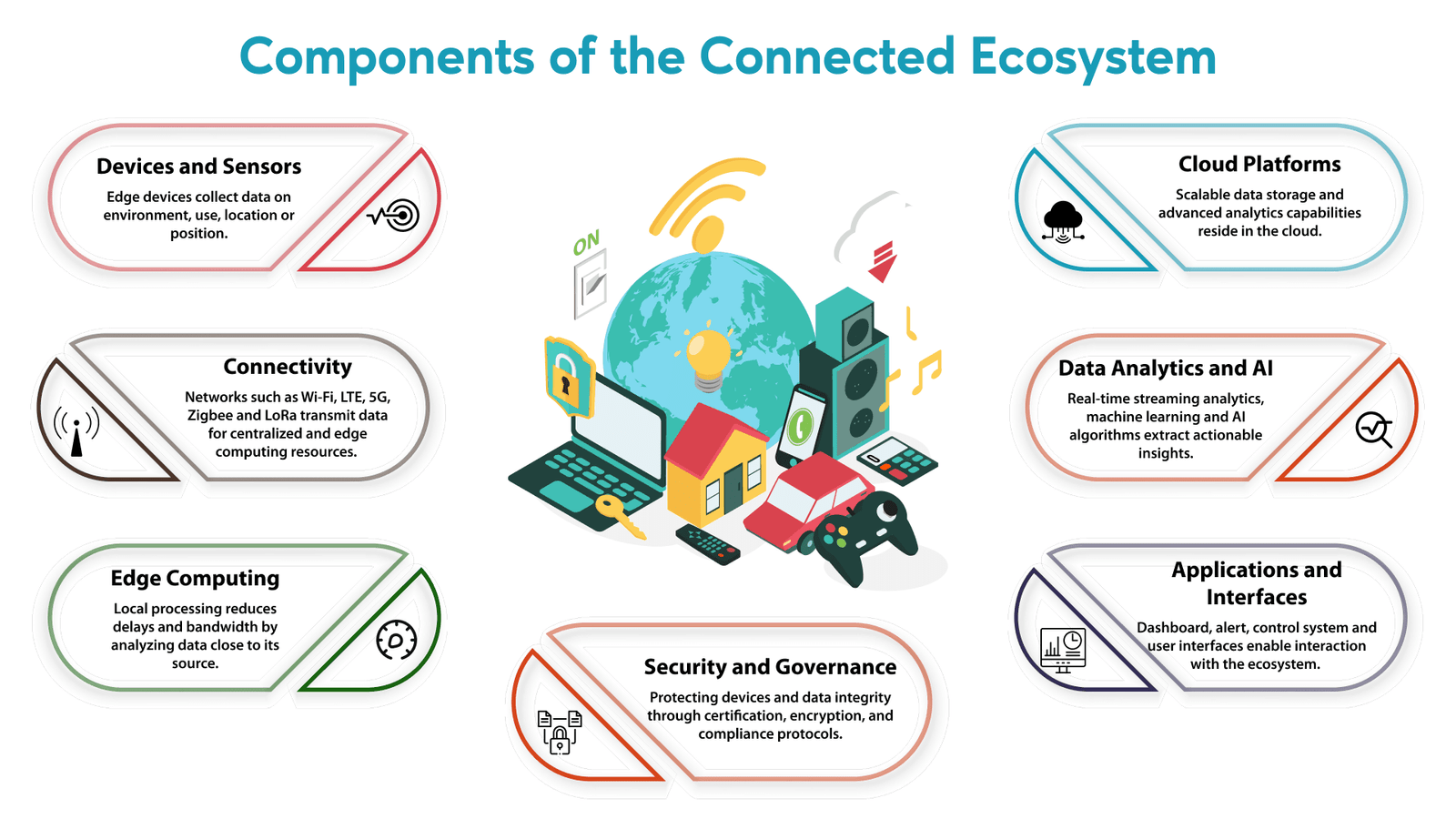
Components of the Connected Ecosystem
Together, these components create an intelligent, adaptive digital environment used in many domains.
Driving Industry Transformation Through IoT and Data
1. Manufacturing: Smart Factories and Industry 4.0
Manufacturers leverage IoT sensors on equipment and production lines to monitor performance, predict failures, and customize the workflow. Data analytics on operational data improves quality control, reduces downtime, and supply chain coordination.
Key benefits include:
- Extension of asset lifetime via predictive maintenance.
- Autonomous quality inspection.
- Automated inventory management.
2. Smart Cities
Cities deploy IoT to monitor traffic flows, air quality, energy use and public safety. By analyzing data streams, officials improve urban services, reduce congestion, and rapidly respond to emergency situations.
Examples include:
- Intelligent street lighting suited for real-time conditions.
- Waste management optimized through sensor data.
- Connected public transportation network.
3. Healthcare: Remote Monitoring and Telemedicine
Wearables and medical devices generate constant data on the patient vital, activity and medicine. Data integration facilitates initial diagnosis, personal treatment and real -time monitoring of chronic conditions.
Impacts include:
- Low hospital readmissions.
- Increased patient engagement and self-care.
- Extended telehealth capabilities.
4. Agriculture: Precision Farming
IoT sensors monitor soil moisture, weather, crop health, and livestock conditions. Data-driven interventions maximize efficiency, conserve resources, and increase yields.
Key applications:
- Automatic irrigation based on soil data.
- Livestock tracking through GPS sensor.
- Pest and disease detection through multispectral sensors.
5. Retail: Connected Consumer Experiences
Retail sellers use IoT devices to study shopkeepers, optimize inventory, and study personalized promotion. Data from sensors, beacons and mobile apps enables an immersive and engaging retail environment.
Examples:
- Monitoring stock levels on smart shelves is important.
- The proximity marketing targets shoppers’ smartphones.
- Omnichannel customer analytics.
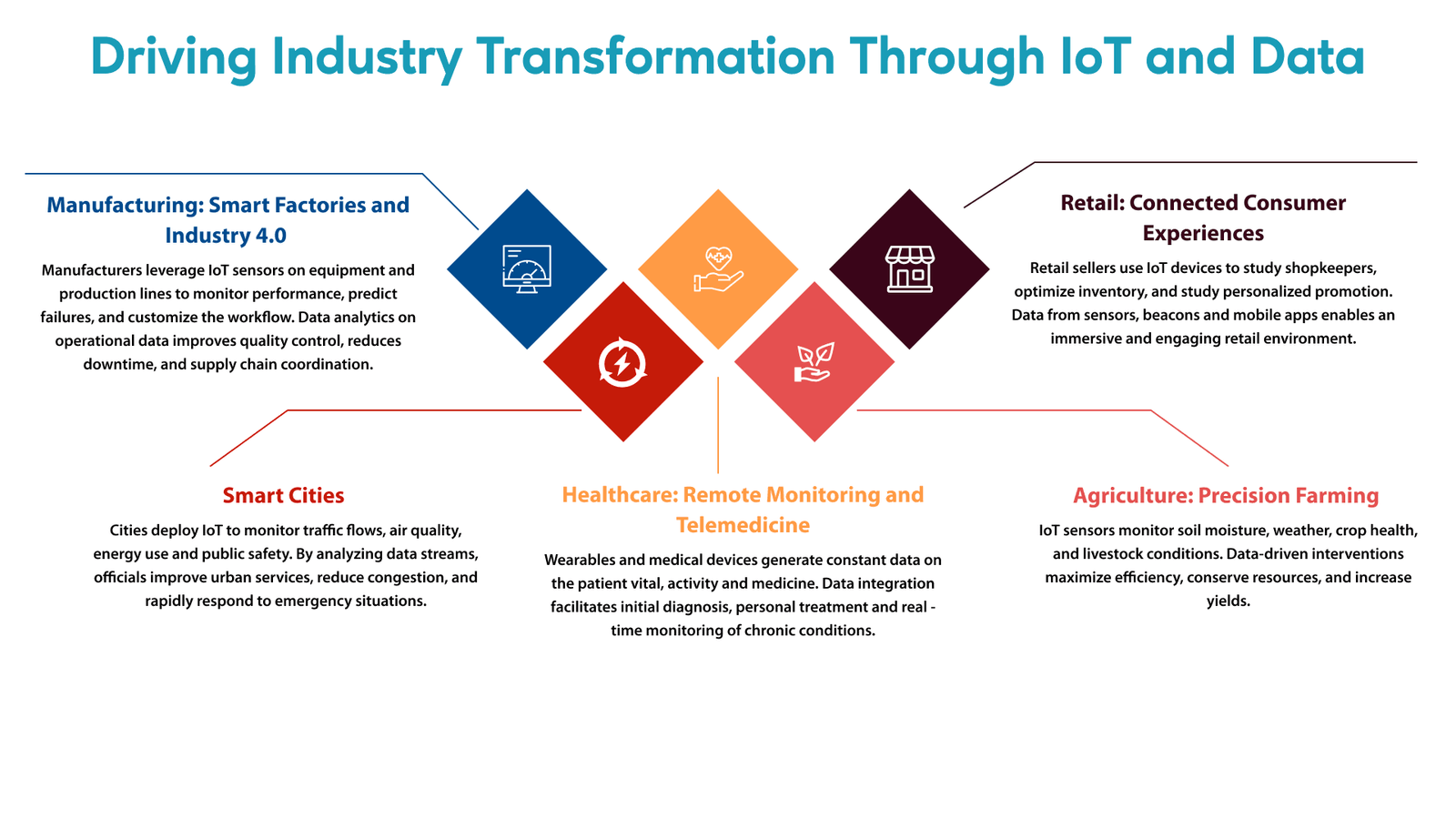
Driving Industry Transformation Through IoT and Data
Challenges in Harnessing IoT Data
1. Data Volume and Velocity
Continuous streaming data from millions of devices requires scalable infrastructure that can be ingested, stored and processed without any bottlenecks or high delays.
2. Interoperability and Standardization
Miscellaneous IoT devices and protocols complicate data integration. The installation of open standards and middleware is important to unite heterogenous data.
3. Security and Privacy Concerns
Protecting billions of endpoints and sensitive data against cyber-attacks and misuse demands multi-level security measures-device certification, encryption, safe communication and governance.
4. Data Quality and Reliability
Sensor malfunctions, environmental noise, and network disruption can introduce incorrect or incomplete data. Mechanisms for verification, error correction, and redundancy are essential.
5. Edge vs. Cloud Processing
Balancing what data to process locally and what send to the cloud optimizes bandwidth use, reduces delay, and meets regulatory obstacles.
6. Skills and Complexity
IoT requires interdisciplinary expertise in hardware, networking, data science and cyber security to develop, deploy, and manage IoT ecosystems.w

Challenges in Harnessing IoT Data
Technological Enablers of IoT Data Optimization
1. Edge Analytics and Fog Computing
Analyzing data at or near the data sources reduces delay and bandwidth, which enables real-time reactions to mission-critical applications.
2. Stream Processing Frameworks
Platforms such as Apache Kafka, Apache Flink, and Apache Spark Streaming are able to process high-velocity data streams for timely insight.
3. Data Lakes and Lakehouses
Flexible data storage architecture that supports raw and processed IoT data provides diverse analytical workloads and machine learning.
4. Artificial Intelligence and Machine Learning
AI models generate predictions, anomaly detection and autonomous decisions based on complex IoT data pattern.
5. 5G and Next-Gen Connectivity
Rapidly, low-latency network videos and IoT expand possibilities by supporting more tools and rich data types such as video and augmented reality.
6. Blockchain
Distributed ledgers enhance trust and security in IoT data sharing and device identity management.
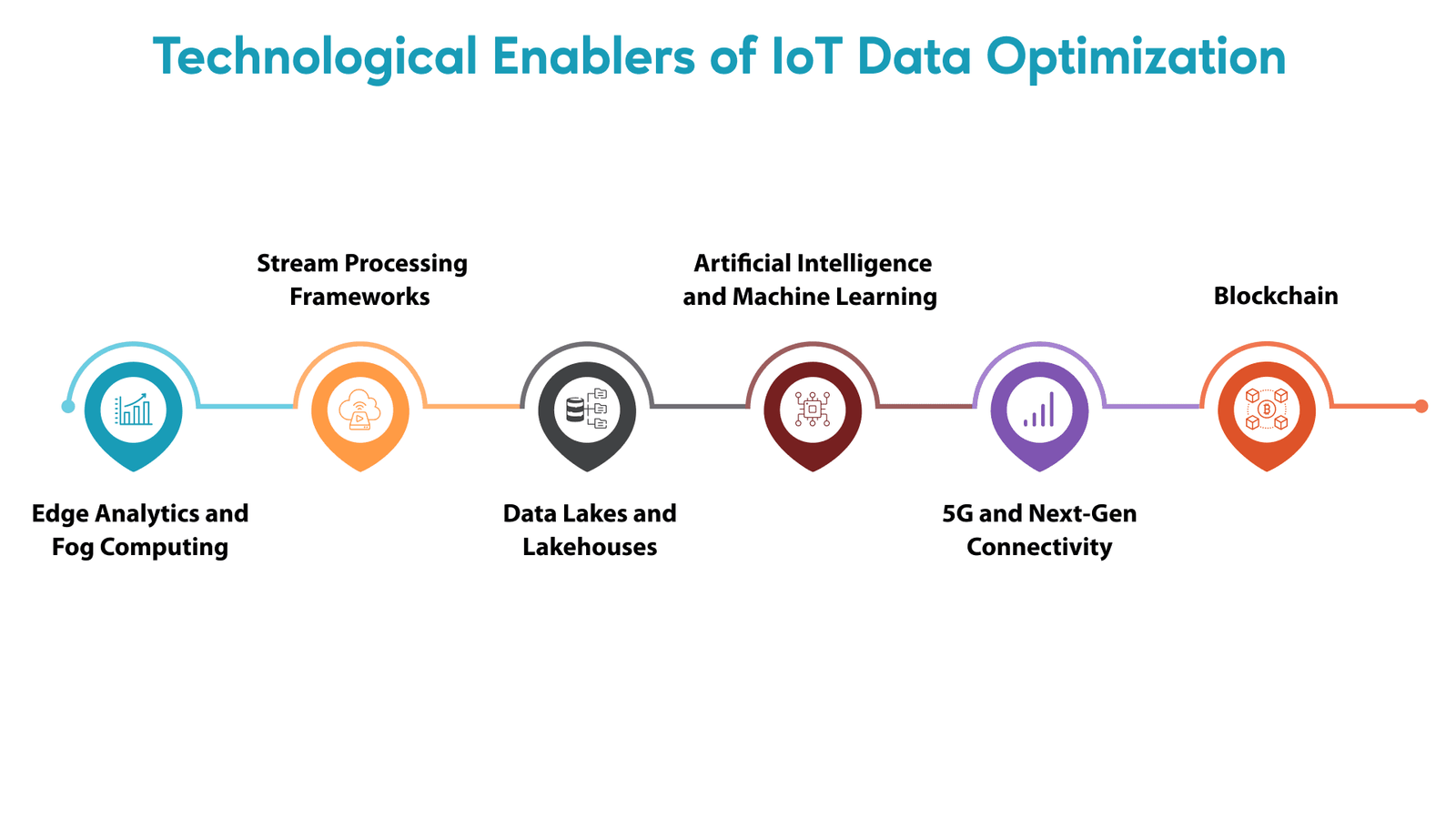
Technological Enablers of IoT Data Optimization
Real-Life Case Studies for IoT and Data
Case Study 1: Siemens – Smart Manufacturing with IoT and Data Analytics
Background:
A global industrial manufacturing giant Siemens has adopted IoT and data analytics to convert its production facilities into smart factories. Facing the increasing demands for efficiency, quality and flexibility, Siemens demanded to leverage connected devices and real-time data to optimize manufacturing processes.
Implementation:
- Siemens equipped its factories with a network of IoT sensors to continuously monitor the condition of the equipment, energy consumption and environmental conditions.
- The data collected from these devices was processed in real time using edge computing solutions, reducing delays and enabling immediate response to discrepancies.
- The aggregated data fed in advanced analytics platforms and AI models for predictive maintenance and quality control.
- A digital twin of the production line was designed to simulate and optimize workflows and resource usage without disrupting the operation.
Outcomes:
- Significant decrease in unplanned downtime due to future maintenance, saving millions in the cost of repair.
- Enhanced product quality through continuous monitoring and immediate corrective actions.
- Improving energy efficiency, reducing operational costs, and environmental impact.
- Greater agility in the production scheme enables rapid response to the demands of the changing market.
This initiative shows how to integrate IoT with advanced data analytics drives operational excellence and business value within the connected ecosystem paradigm.
Case Study 2: City of Barcelona – Building a Smart City through IoT Data
Background:
Barcelona is recognized as one of the major smart cities in the world, which leverages IoT and data to improve urban living quality, stability, and public services. With challenges around traffic congestion, air quality and energy use, Barcelona aims to use technologies and data insights to create a more responsible and efficient urban environment.
Implementation:
- The city deployed a huge network of IoT sensor, including smart street lighting, air quality monitor, parking sensor and waste management systems.
- These devices continuously collect data transmitted on the wireless network on central cloud platforms for analysis.
- The real-time monitoring dashboard provided the city managers insight into traffic flows, pollution hotspots and service usage.
- The data-driven algorithm adapted the street lighting schedule and waste collection routes, reducing costs and pollution.
- The mobile application allows citizens to reach the city's services and report issues that create a participatory ecosystem.
Outcomes:
- A 30% decrease in energy consumption due to adaptive street lighting.
- Improvement in air quality management guided by responsible pollution control measures.
- Increased efficiency in waste collection and reduced operational expenses.
- Increased citizen engagement and satisfaction through transparent access to data and services.
Barcelona's comprehensive IoT and data strategy explains how connected ecosystems can transform urban centers, promote stability, and better governance.
Best Practices for Building Connected Ecosystems
- Start with Clear Use Cases: Focus on business objectives - whether customer experience improves, optimizing operations, or enabling new services.
- Adopt Scalable Architecture: Integrate the edge and cloud processing with flexible data pipelines.
- Implement Robust Security by Design: Include strong authentication, encryption, and continuous monitoring.
- Foster Data Governance: Continuously manage data quality, privacy compliance and life cycle.
- Leverage Analytics for Action: Translate data into insight and automate the responsive workflows.
- Prioritize Interoperability: Use open standards and APIs for seamless integration between equipment and platforms.
- Invest in Skills and Ecosystem Partnerships: Build versatile teams and cooperate with device manufacturers, cloud providers, and integrators.
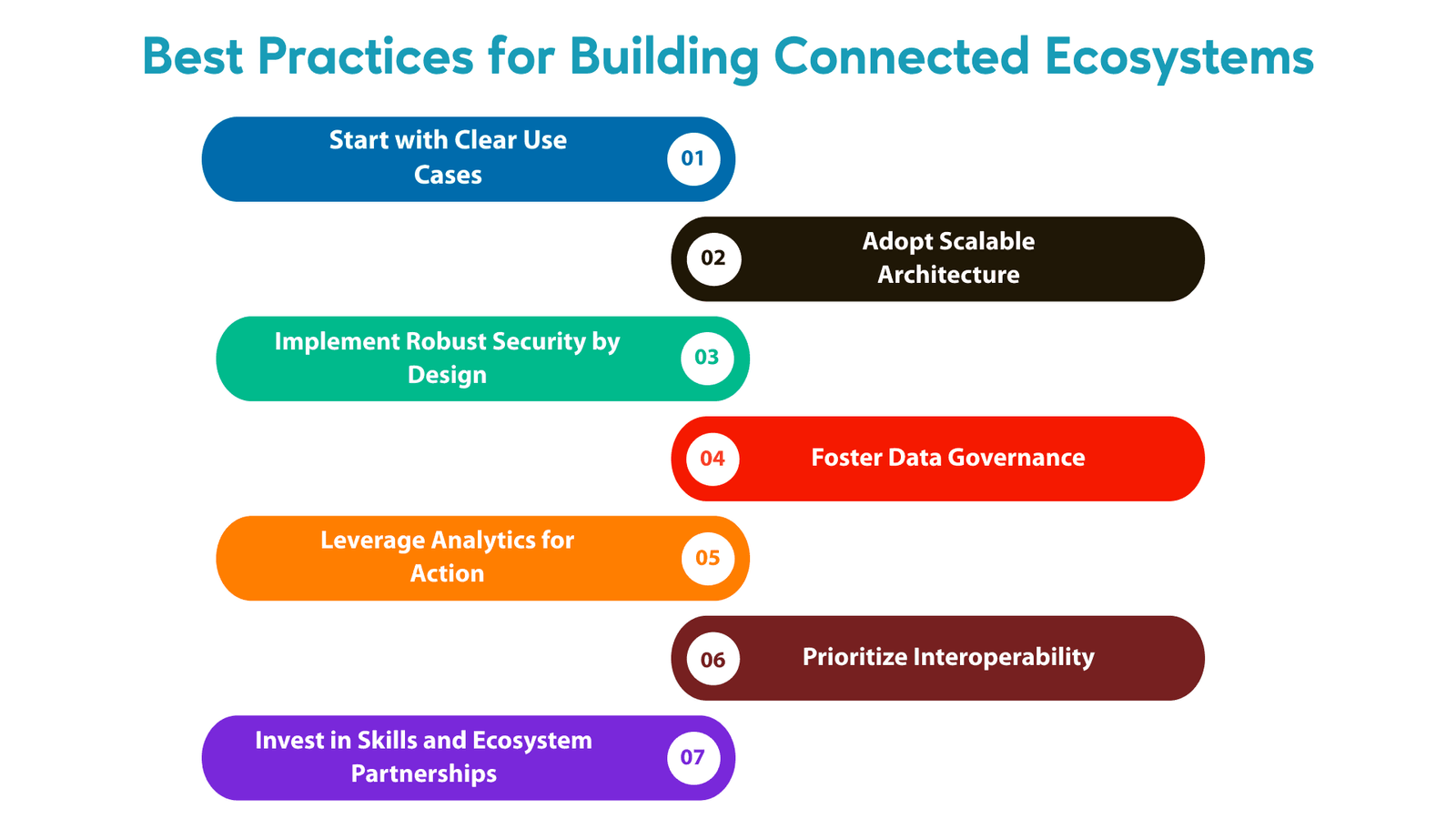
Best Practices for Building Connected Ecosystems
Future Outlook of IoT and Data-Driven Ecosystems
- AI and Automation at the Edge: Increased intelligence embedded in devices will enable autonomous systems with minimal human intervention.
- Digital Twins: Creating accurate virtual replicas of physical assets for simulation, monitoring, and adaptation.
- Enhanced Human-Machine Interfaces: Voice, AR/VR, and gesture control will create more immersive experiences.
- Sustainability and Smart Resource Management: IoT data will optimize energy, water and physical use, supporting environmental goals.
- Expanded Consumer IoT: Personal, context-aware smart homes and wearable equipment will generate rich data and experience.

Future Outlook of IoT and Data-Driven Ecosystems
Wrapping Up
IoTs and data together form the backbone of the ecosystem, reevaluating how we live, work, and interact with the world around us. By intelligently capturing, processing and analyzing IoT-generated data, enterprises and communities can improve security, stability and quality of life.
The manufacturing and optimization of connected ecosystems requires visionary strategies, state-of-the-art technology, and comprehensive governance. As this space evolves rapidly, organizations that embrace the capacity of IoT and data-driven innovation will lead the digital future- fueling progress, transforming industries and creating a more responsive environment for all.
This Article is also here



